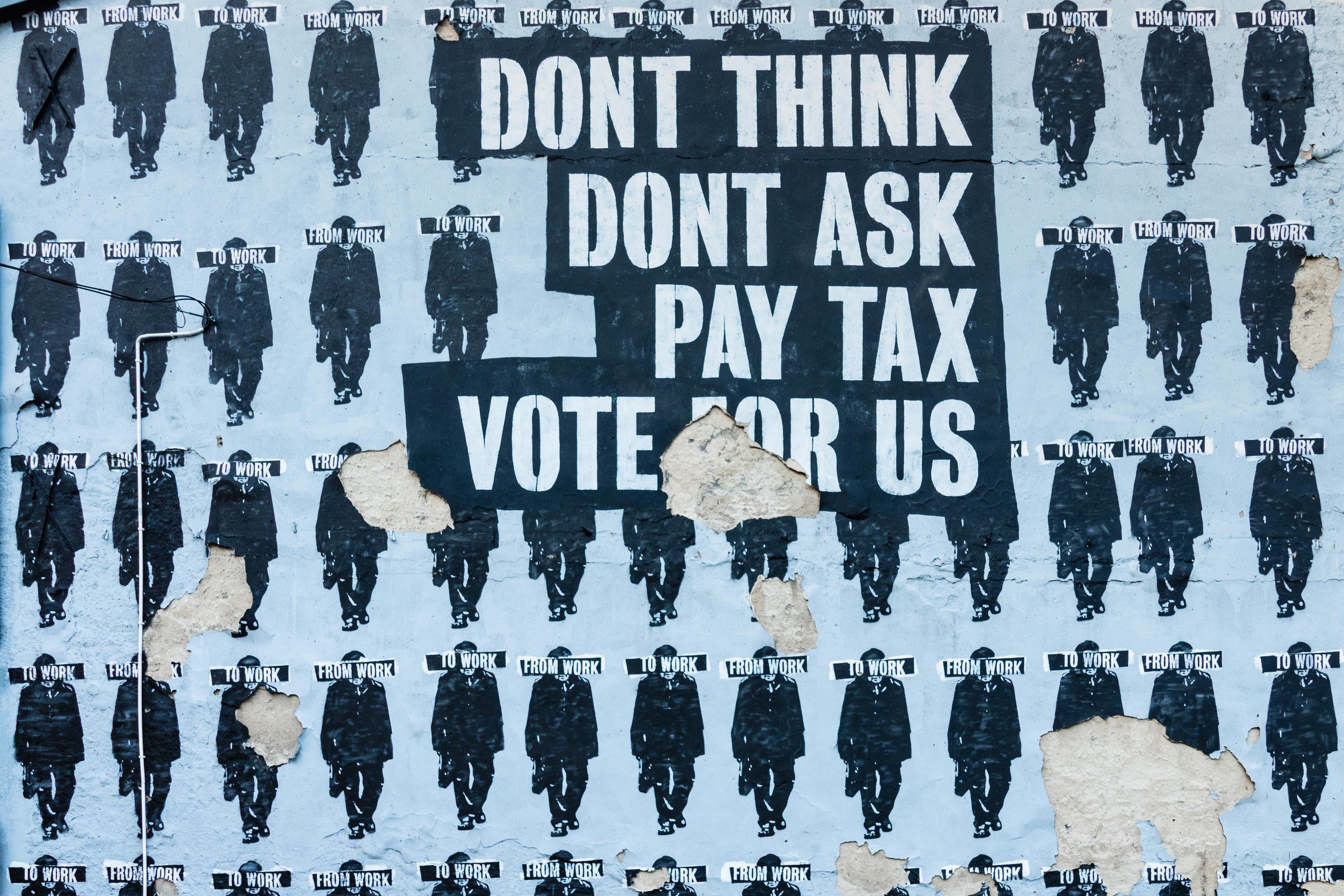When Does Vandalism Become a Felony?

Is vandalism a felony? While it may seem like a petty crime, the act of vandalism can often be considered a felony. There are many different forms of vandalism, and the range of punishments scales with the amount of damage caused.
Vandalism is one of the most common felonies that are committed each year, and it’s important to understand the consequences of this crime. Below we’ll go over all the instances in which vandalism is a felony.
How Vandalism is Prosecuted
The definition of vandalism is willfully causing damage to someone else’s property. To prove that a person has perpetrated this crime, a prosecutor must demonstrate to a court that the defendant committed either of the following acts with malicious intentions:
- Damaged or destroyed real or personal property.
- Defaced an item in public.
If the defendant is not the owner of the property or owns the property jointly with someone else, and the conditions above can be proven, vandalism has occurred.
History of Vandalism
Historically, vandalism has referred to the destruction of art, and that is where the term originated. In ancient Rome, a group of Germanic people called the Vandals committed destruction of property in their sacking of the city in the year 455. The destruction included intentional damage to statues and is the first known example of vandalism to art. In 1794, the Bishop of Blois, Henri Gregoire, coined the term Vandalisme as he described the destruction of art during the French Revolution.
Examples of Vandalism
Here are some modern cases of vandalism:
- Defacing a street sign.
- Defacing a poster advertisement.
- Keying a car to damage the coat of paint.
- Drawing on a bathroom stall.
- Knocking over a mailbox.
- Spray painting someone else’s property.

Political Vandalism
One of the most common forms of vandalism is of the political variety. You may think it’s funny to draw on a sign of a politician you do not support but understand that this is considered vandalism and is a crime. While in most instances, this kind of destruction will be regarded as a misdemeanor, political vandalism that results in enough damage of property can lead to a felony charge.

Cyber Vandalism
Yes, there is such a thing as cyber vandalism. It can range from an act as seemingly harmless as putting false information on Wikipedia, to the severe crimes of creating malware, spyware, and ransomware.

Vandalism as Art
Is graffiti vandalism or art? Sometimes it can be both. Graffiti is defined as anything written or painted on public walls and is a practice that has been ongoing for thousands of years. But technically, graffiti is considered defacement and is a punishable crime.
Many graffiti artists are lauded for their artistic abilities, and the graffiti is celebrated in the community. However, it is still considered vandalism. While graffiti can beautify a dull brick wall, if you get caught, you will have to be ready to face the consequences. Generally, graffiti vandalism will only result in a misdemeanor, but the charge you encounter will be dependent on the amount of damage caused.
Penalties for Vandalism by State
Each state has its own laws for punishing vandalism. Below, we’ll go through each state’s laws and the cases in which vandalism can be considered a felony.
Alabama
In Alabama, vandalism is considered criminal mischief. When the damage to the property is under $500, it is considered third-degree criminal mischief, punishable with up to $3000 in fines and six months in jail. Damage of property totaling $500 to $2500 is considered second-degree criminal mischief, punishable with up to $6000 in fines and a year in jail.
Causing over $2500 in property damage is first-degree criminal mischief and is considered a Class C felony. The punishment for first-degree criminal mischief in Alabama is one to ten years in jail and as much as $15,000 in fines.
Alaska
In Alaska, the laws are much different as far as when vandalism can be considered a felony. Alaska has five different degrees of criminal mischief, and three of them can be regarded as a felony crime. Fifth-degree criminal mischief is causing less than $50 worth of damage and comes with penalties of up to 90 days in prison and $2000 in fines. Fourth-degree criminal mischief is causing $50 to $500 worth of damage, which results in penalties of up to one year in jail and $10,000 in fines.
The final three degrees are all considered felonies. Third-degree criminal mischief is causing over $500 worth of damage and is considered a Class C felony with punishments of up to five years in jail and $50,000 in fines. Second-degree criminal mischief is a Class B felony with penalties of up to 10 years of jail time and $100,000 of fines. Examples of a second-degree offense include tampering with an oil or gas pipeline or facility or tampering with food, water, air, or drug containers.
Finally, first-degree criminal mischief is the same as second degree, but for property damages of over $100,000. The penalties, in this case, are up to five years in jail for first-time offenders, or up to 20 years if you have a criminal record. Fines can go as high as $250,000.
Arizona
In Arizona, the law is much simpler than in Alaska. If the damage caused is under $250, the crime is considered a misdemeanor. However, all damage caused beyond $250 is viewed as a felony.
- Class 6 Felony – Damage of $250 to $2000.
- Class 5 Felony – Damage of $2000 to $10,000.
- Class 4 Felony – Damage of $10,000 or more.
Arkansas
In Arkansas, vandalism resulting in less than $500 worth of damage is considered a misdemeanor. But first-degree criminal mischief can be charged if destruction of property over $500 was done to collect insurance payments. In this case, a Class C felony has been committed.
The crime becomes a Class D felony when the destruction of someone else’s property totals more than $2500. Vandalism in Arkansas that results in a Class C felony is when a vital public facility has been damaged or disabled.
California
California is straightforward when it comes to vandalism. In most cases, vandalism is considered a misdemeanor, with fines ranging for the amount of damage, but penalties not exceeding one year in jail. Vandalism in California becomes a felony when the crime was arson, or when the vandalism is considered a hate crime.
Colorado
In Colorado, causing damage through vandalism of less than $500 is a Class 2 misdemeanor. Loss of value between $500 and $1000 is a Class 1 misdemeanor. But the destruction of over $1000 worth of property is considered a felony. It is a Class 4 felony if the damage is between $1000 and $20,000, and it is a Class 3 felony if the loss is over $20,000.
Connecticut
In Connecticut, you can be convicted of a felony for committing first-degree criminal mischief. Examples of this include:
- Property damage of over $1500.
- Vandalism to a public utility, transportation, or communication that causes an interruption or impairment of services.
- Causing damage to electronic monitoring equipment.
- Tampering with any property owned by the state for fire or police purposes.
Delaware
Delaware vandalism laws are simple. If the damage totals more than $1500, you can be convicted of a Class G felony.
Florida
In Florida, you have committed a third-degree felony if vandalism caused damages of over $1000. Also, if you already have criminal mischief on your record and are convicted a second time, destruction of less than $1000 can still be elevated to a third-degree felony.
Georgia
Georgia has stringent vandalism laws when compared with other states. Any vandalism to government property is a felony in Georgia. You have also committed a felony if you are convicted for first- or second-degree criminal damage.
Hawaii
There are many different ways to commit a felony through vandalism in Hawaii. First-degree criminal property damage is a Class B felony and can be defined as:
- Causing damage that puts another person in danger.
- Causing over $20,000 worth of damage to another person’s property.
- Damaging agricultural equipment totaling over $1500.
Second-degree criminal property damage is a Class C felony and can be defined as:
- Damaging property with dangerous means.
- Causing over $1500 worth of damage to another person’s property.
- Damaging agricultural equipment totaling over $500.
Idaho
Idaho is incredibly simple when it comes to whether vandalism is a felony. If you cause over $1000 worth of damage, you will face felony charges.
Illinois
There are four classes of felonies for vandalism in Illinois. The property that has damaged must be to a school, a place of worship, or farm equipment.
- Class 4 Felony – Damage of $300 to $10,000.
- Class 3 Felony – Damage of $10,000 to $100,000.
- Class 1 and Class 2 Felony – Damage over $100,000.
Indiana
In Indiana, there are two types of felony charges for vandalism: Class C and Class D. A Class D felony is committed when vandalism has been done to a school, church, or community center, and the damage is between $250 and $2500. When the loss of value is more than $2500, a Class C felony has been committed.
Iowa
Iowa is similar to Indiana with the same two types of felonies for vandalism but in a different context. A Class D felony is when someone caused damages between $1000 and $10,000. A Class C felony is for vandalism damages totaling more than $10,000.
Kansas
Kansas is more vague with their vandalism laws, and have three potential types of felonies. A Class B nonperson felony is on the table for damages that go up to $1000 with no minimum threshold. A severity level 9 nonperson felony is for loss of value between $1000 and $25,000. Lastly, a severity level 7 nonperson felony can be charged for damage totaling over $25,000.
Kentucky
In Kentucky, most vandalism will only result in misdemeanor charges. But if you damage property totaling more than $1000, you will face a Class D felony.
Louisiana
In Louisiana, felony punishments are not as succinctly laid out as other states. The threshold for vandalism damage which results in a misdemeanor is $500. If the amount of damage is between $500 and $50,000, you could face up to two years in jail. Misdemeanor crimes can be punished with a maximum of one year in prison. Anything over one year would be considered a felony. The maximum penalty in Louisiana is damaging over $50,000 worth of property, which results in one to ten years in jail.
Maine
Maine has two ways of classifying vandalism charges: Class D crime and Class C crime. There is no dollar threshold for a Class D crime. If you damage property that is not your own, you can face up to one year in prison, with additional fines and restitution. A Class C crime can be considered a felony with punishments up to five years in jail. Class C crimes have been committed if over $2000 worth of property is damaged.
Maryland
In Maryland, the punishments for vandalism are always varying forms of misdemeanors. The one exception is if you commit arson, which is a felony.
Massachusetts
Massachusetts law punishes vandalism as a felony when any amount of damage occurs to one of the following:
- Educational facility
- House of worship
- Memorial
- Community center
- Burial grounds
Damages less than $5000 can result in a maximum of two and a half years in jail and fines for three times the amount of damage. Costs of over $5000 result in a maximum of five years in prison and the same fine.
Michigan
You can be charged with a felony in Michigan for any vandalism that results in damages over $1000. You can also be charged with a felony if you have previously been convicted of the same offense.
Minnesota
Minnesota has very similar vandalism laws as Michigan. A felony will result if the damage was over $1000, or if the damage is over $500 and you have a prior conviction.
Mississippi
In Mississippi, the threshold for a felony vandalism offense is anything over $500.
Missouri
If you commit vandalism and the damage is worth more than $750, you have committed a felony in Missouri.
Montana
Montana makes their vandalism laws simple. If the property damaged is less than $1000, the crime is a misdemeanor. Anything over $1000 is a felony.

Nebraska
Most vandalism charges in Nebraska are misdemeanors. But if the property damaged is over $1500, you will face a Class IV felony.
Nevada
In Nevada, the only time vandalism becomes a felony is when the damage is valued at more than $5000.
New Hampshire
New Hampshire has four different ways that felony vandalism can be committed:
- The value of damage is over $1000.
- Causing substantial interruption or impairment to utilities or public transportation.
- Firing a gun in an occupied structure.
- Damaging property considered historical, cultural, or sentimental, where the damage cannot be repaired.
New Jersey
You can be charged with a felony in New Jersey for vandalism with damages over $500 or by damaging public transportation, utilities, air traffic devices, crypts, or airports.
New Mexico
Like many states, New Mexico sets a $1000 limit before you can be charged with a felony for vandalism.
New York
New York has the strictest vandalism laws of all. If property incurs damage of over $250, you can be charged with a Class E felony.
North Carolina
The only way to commit a felony through vandalism in North Carolina is to cause damage with an explosive or incendiary device. The class of felony rises depending on where the vandalism occurs.
North Dakota
The threshold for a felony vandalism charge in North Dakota begins at $2000 and ranges to $10,000 for a Class C felony. Destruction of over $10,000 worth of property results in a Class B felony.
Ohio
In Ohio, felony vandalism occurs only when the property damaged is used for someone else’s business. For this type of crime, there is no minimum value threshold.
Oklahoma
Oklahoma can charge you for a felony if the vandalism damage is over $1000, or if any vandalism has occurred at a house of worship.
Oregon
Felony vandalism occurs in Oregon if any of the following occur:
- Destruction of over $750 worth of property
- The property is a livestock animal
- Damage occurs on utilities or public transportation
Pennsylvania
To be charged with felony vandalism in Pennsylvania, the loss of value must be greater than $5000.
Rhode Island
All forms of vandalism in Rhode Island are misdemeanors.
South Carolina
In South Carolina, vandalism resulting in damages of over $1000 is a felony.
South Dakota
South Dakota also has a limit of $1000 before misdemeanor vandalism becomes a felony.
Tennessee
In Tennessee, the threshold for felony vandalism is damage totaling over $500.
Texas
Texas ups the limit to $1500 before misdemeanor vandalism becomes a felony.
Utah
Continuing the common theme throughout the states, vandalism damage of over $1000 is a felony in Utah.
Vermont
Vermont keeps it simple as well, with over $1000 worth of property destruction resulting in a felony.
Virginia
Virginia is yet another state with $1000 representing the breaking point for vandalism to be considered a felony.
Washington
Breaking up the trend, you must damage over $1500 worth of property for vandalism to be considered a felony in Washington.
West Virginia
The amount of damage necessary to face felony charges in West Virginia is over $2500.
Wisconsin
You can be charged with a felony for vandalism in Wisconsin if the property damaged is a highway, state property, or over $2500 worth of destruction is caused.
Wyoming
A fitting end to state laws on vandalism, Wyoming sets the limit for a misdemeanor at $1000. Causing destruction of property totaling over $1000 is a felony.



